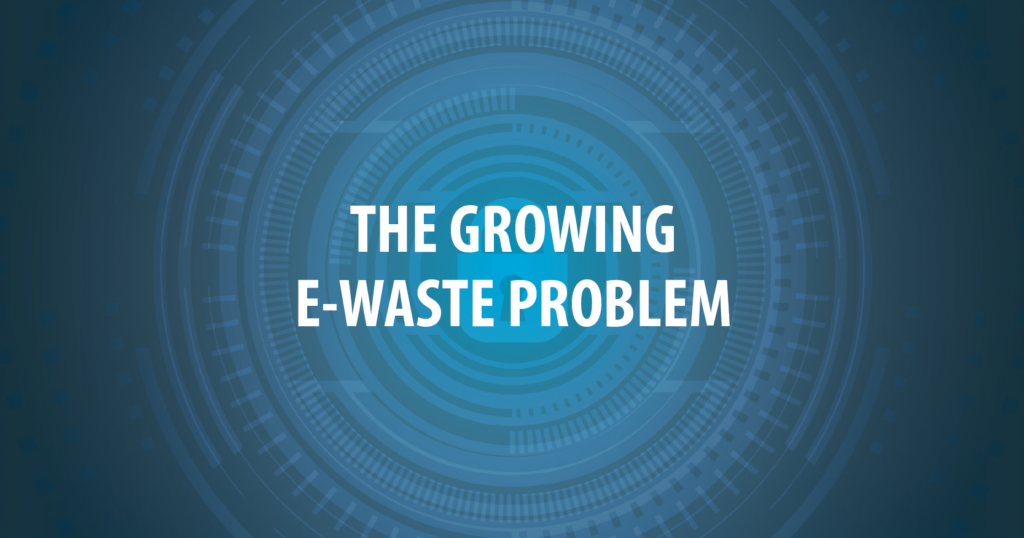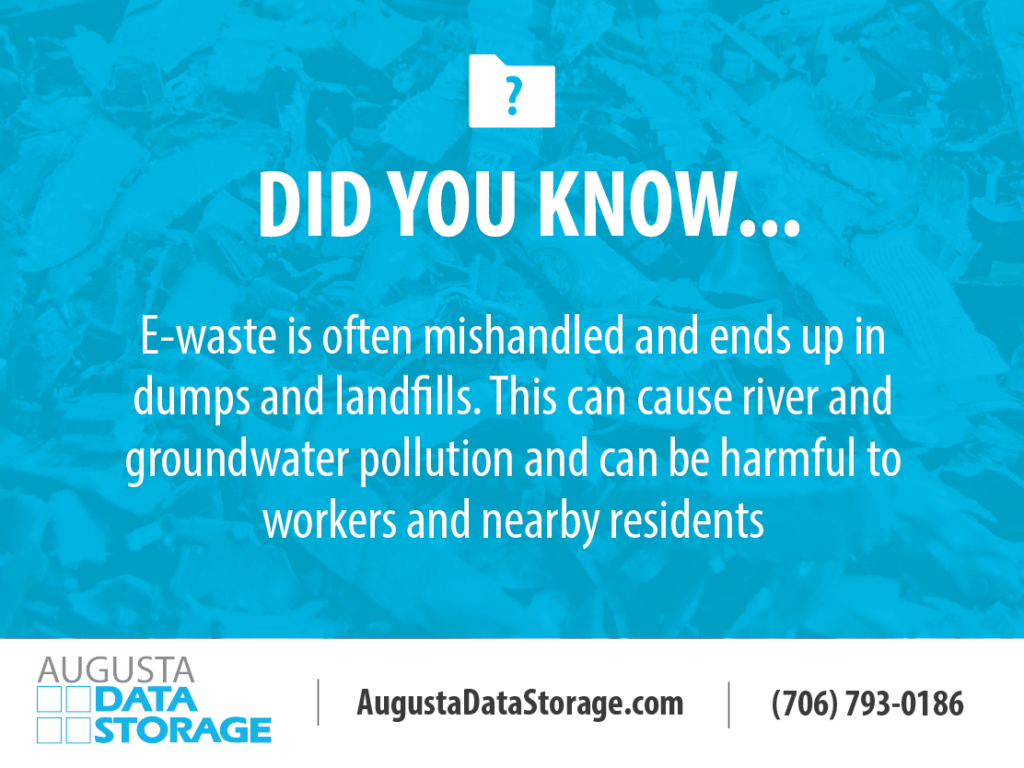The Growing E-Waste Problem

The piles of discarded electronics are growing ever larger. According to Brooks Hoffman, “In 2014, the world collectively tossed an estimated 44.4 million metrics tons of unwanted “e-waste” – battery-powered or plug tethered devices”. It is estimated that by 2030 that number will grow to about 74.7 million tons.
What Happens To E-Waste?
There was a record number of e-waste generated worldwide in 2019: “53.6 million metric tons of discarded phones, computers, appliances, and other gadgets”. According to The Verge, this is more than the combined weight of all the adults in Europe and is a 21% increase since 2014.
In America, much of the e-waste we generate is shipped to Asian countries where it collects, en masse, and is not discarded properly. Jim Puckett tracked an e-waste shipment to Hong Kong. After the e-waste is delivered it is often dumped in landfills, polluting rivers and groundwater supplies and unqualified laborers can poison towns, develop cancer, and damage their nervous systems by breaking apart electronics without regard for the severe health consequences. During his research, Puckett also found e-waste moved within the United States to Seattle’s Harbor Island.

According to The Conversation, “Global electronic waste is up 21% in five years”. Only 17.4% of 2019’s e-waste was actually collected and recycled. Without proper recycling and handling, dangerous and toxic substances such as mercury, brominated flame retardants, chlorofluorocarbons and hydrochlorofluorocarbons are released into the environment and can be harmful to people who live, work, and play in these areas.
What is E-Cycling?
According to the Merriam-Webster Dictionary, e-cycling is the effort to reuse or recycle electronic equipment or components especially for the purpose of reducing waste and pollution.
How Does E-Cycling Work?
When old electronics are e-cycled, they are “either donated for reuse or disposed of safely at a designed location where they are broken down and have their parts separated for repurposing”. This helps to reduce the amount of toxic metals that can leach into the soil, water, and air when disposed of in a landfill or incinerated. E-cycling keeps these harmful toxins away from humans, animals, and the biosphere.
There are two main ways that electronics are recycled. During demanufacturing, electronics are manually dismantled in order to market the recyclable raw materials. This process produces more components that can be reused and is done by trained technicians with machines and hand tools. The other option is shredding. Shredding involves very little manual sorting and the electronics are loaded into large shredding equipment. This allows recyclers to recover the maximum value from the recyclable metals in used electronics.
The benefit of e-cycling is being able to reduce the amount of toxic emissions that are released into the environment.
Where Can I E-cycle My Old Devices?
There are many ways to recycle unwanted electronics. The recommended option is to take it to a recycler. Many companies are available to help you e-cycle your old electronics. One group called Call2Recycle offers drop-off locations all over the United States. Best Buy also offers electronics, appliances, and fitness equipment recycling, and many retailers have trade in programs for old devices..
Here in the Augusta, GA area, Augusta Data Storage offers electronic waste solutions designed to reduce or eliminate both the security and environmental risks associated with disposal of end-of-life electronics. Secure destruction is the best option for maintaining the integrity of your confidential data even after it is deleted.
If you are not looking to destroy your electronics, you can also donate your items or take it to a tech firm. If you are choosing not to destroy your old electronics, make sure you have completely removed any information that may be stored.
Hard Drive Shredding
All electronic devices have the ability to store your personal information, even after it has been deleted. Information security is key to prevent cybercrimes. Hard drive and e-waste shredding offer a secure and environmentally conscious option, instead of tossing your old devices. Secure destruction is one of the only ways to ensure that information on your old devices is no longer accessible. .
Did you know that When information is ‘deleted’ from a hard drive, the data is not permanently erased? Contrary to popular belief, the information can still be recovered with the right tools, software, and know-how. This comes in handy if information is accidentally deleted, but can pose many security risks if not handled properly.
A report published by the National Association for Information Destruction (NAID®) revealed that 40% of second-hand devices that had previously been “wiped” still held personally identifiable information. When you delete files, your operating system doesn’t just annihilate that information. Rather, the system deletes the file path pointing towards the data, meaning that the information is still recoverable in some cases. When it comes to discarding or recycling your devices, there are three available methods: Destruction, Formatting, and Degaussing.
It is important to know the difference between deleting, degaussing, and destroying information. Deleting information is what most people start with. This is only recommended if the disk or hard drive will be reused within the organization. Degaussing removes data by rearranging the magnetic field on electronic media to completely erase it. The last step in data destruction is to physically destroy the media. This is often done by shredding.

If you are looking for media destruction, Augusta Data Storage is here to help! Contact us today to get started!
